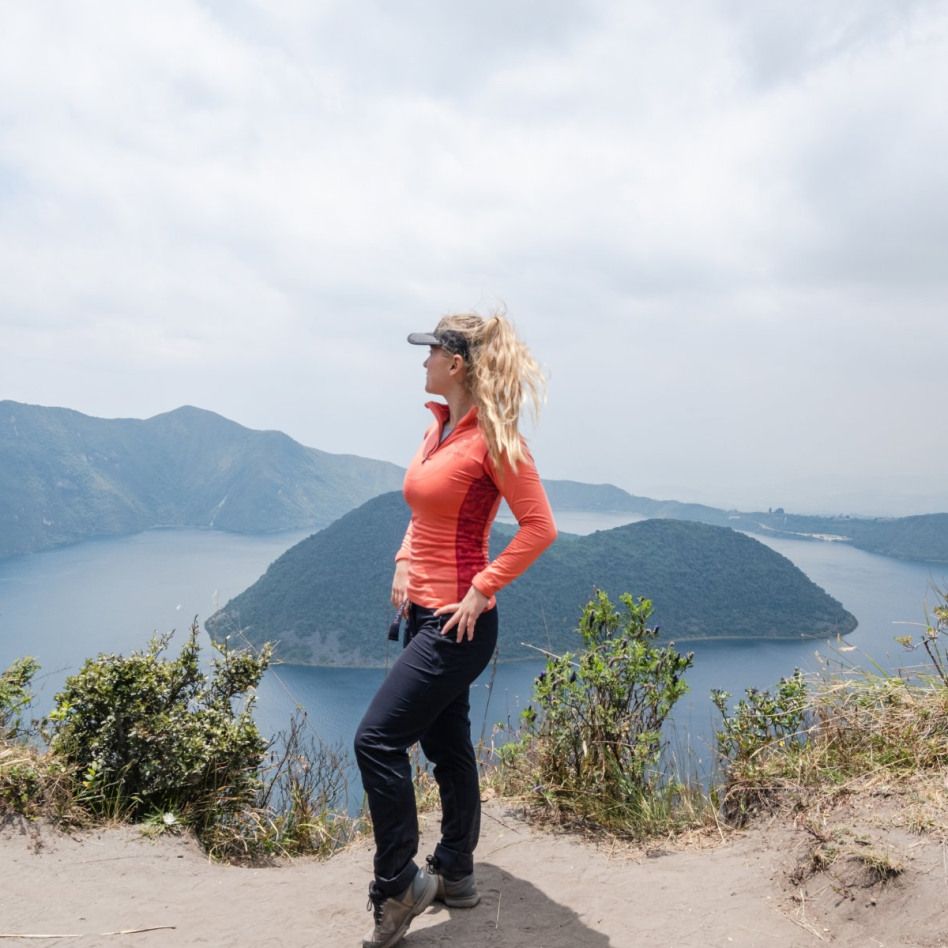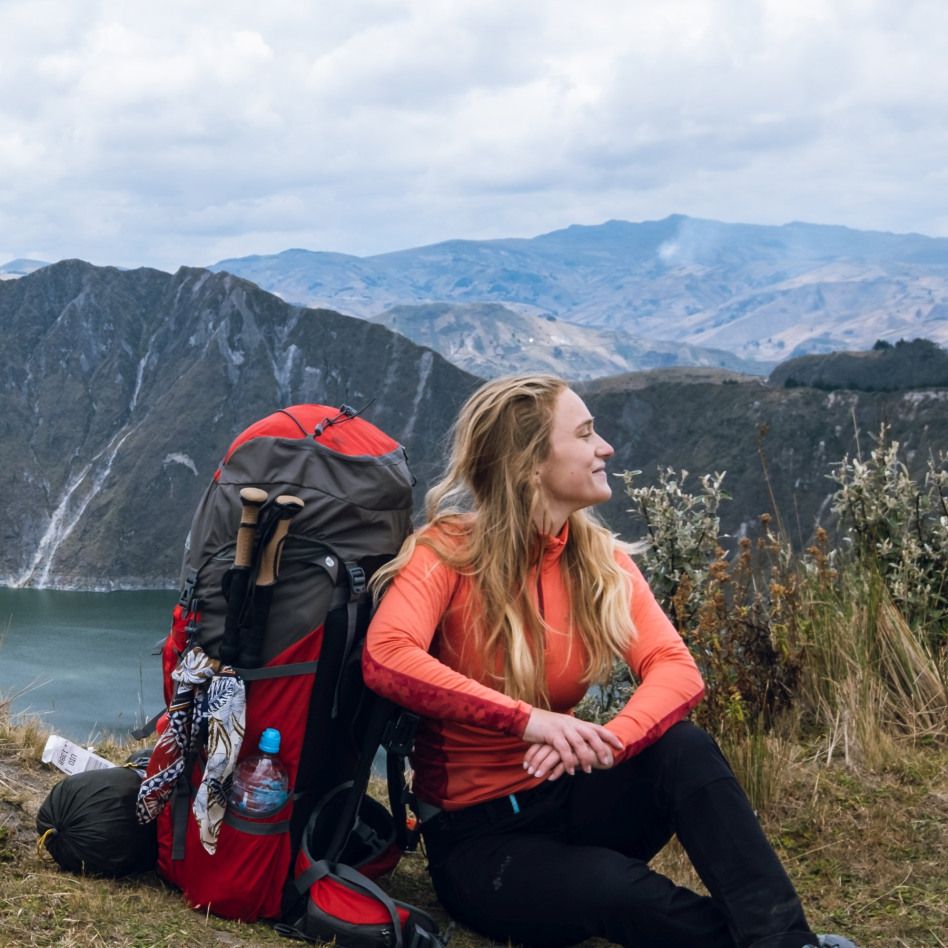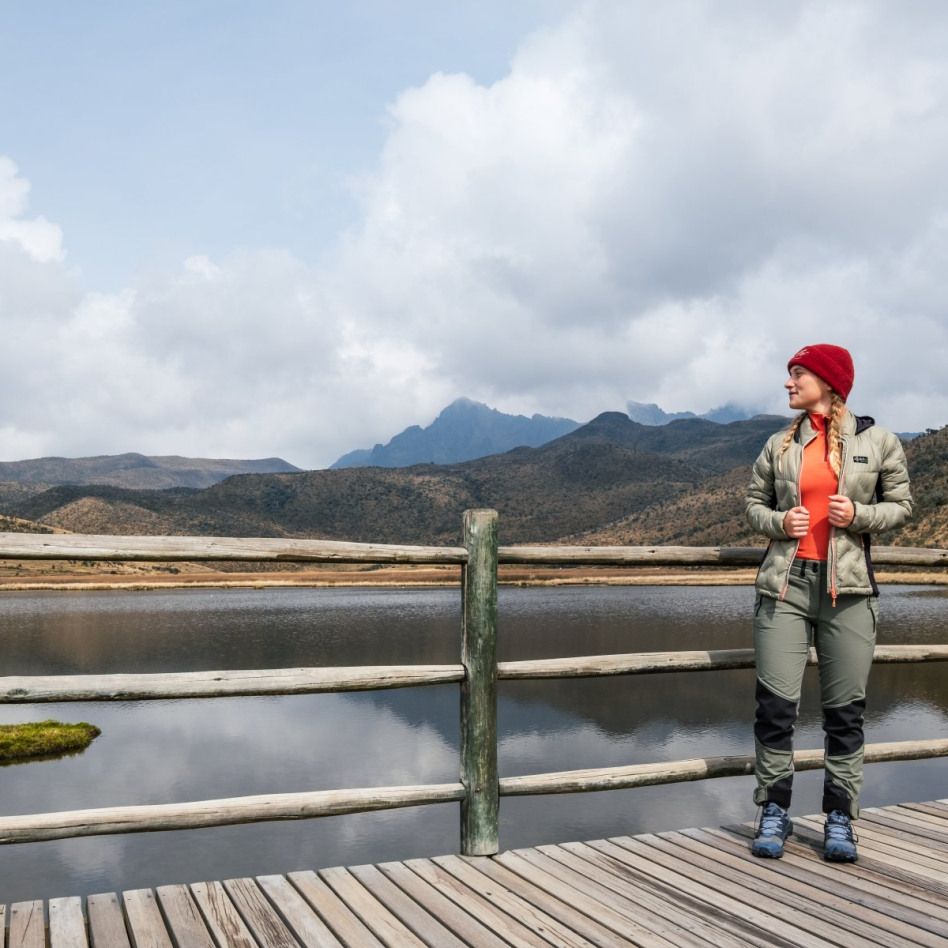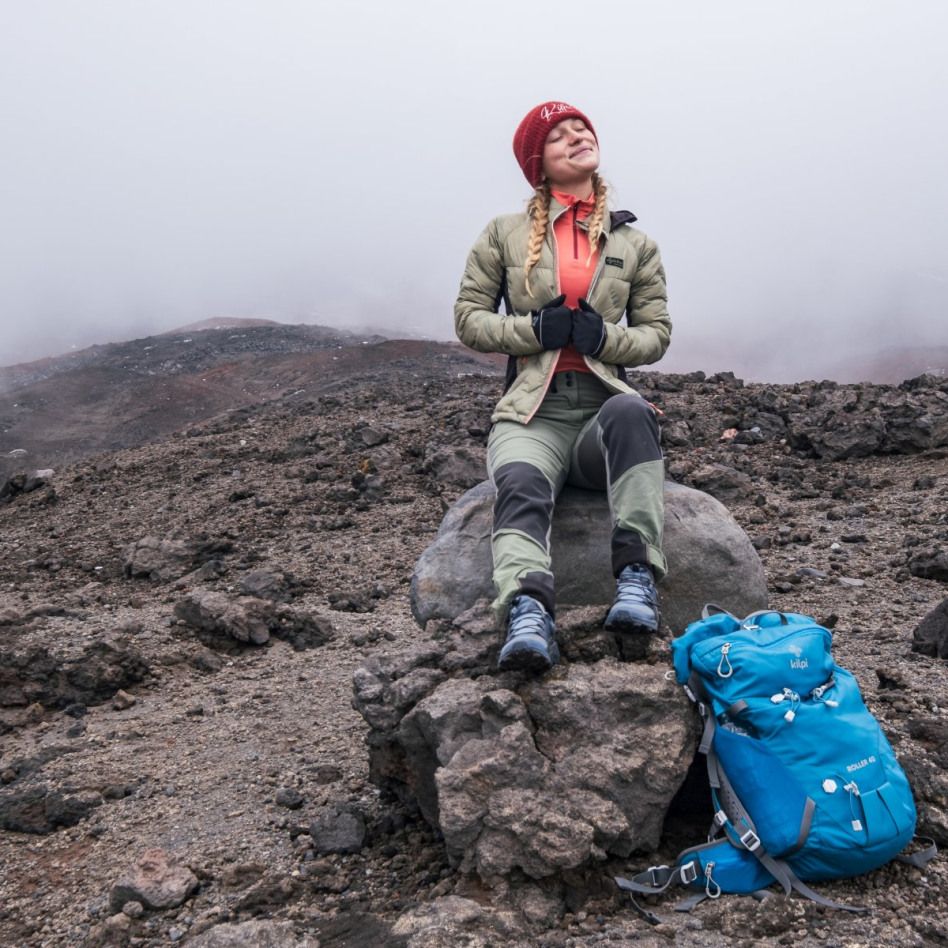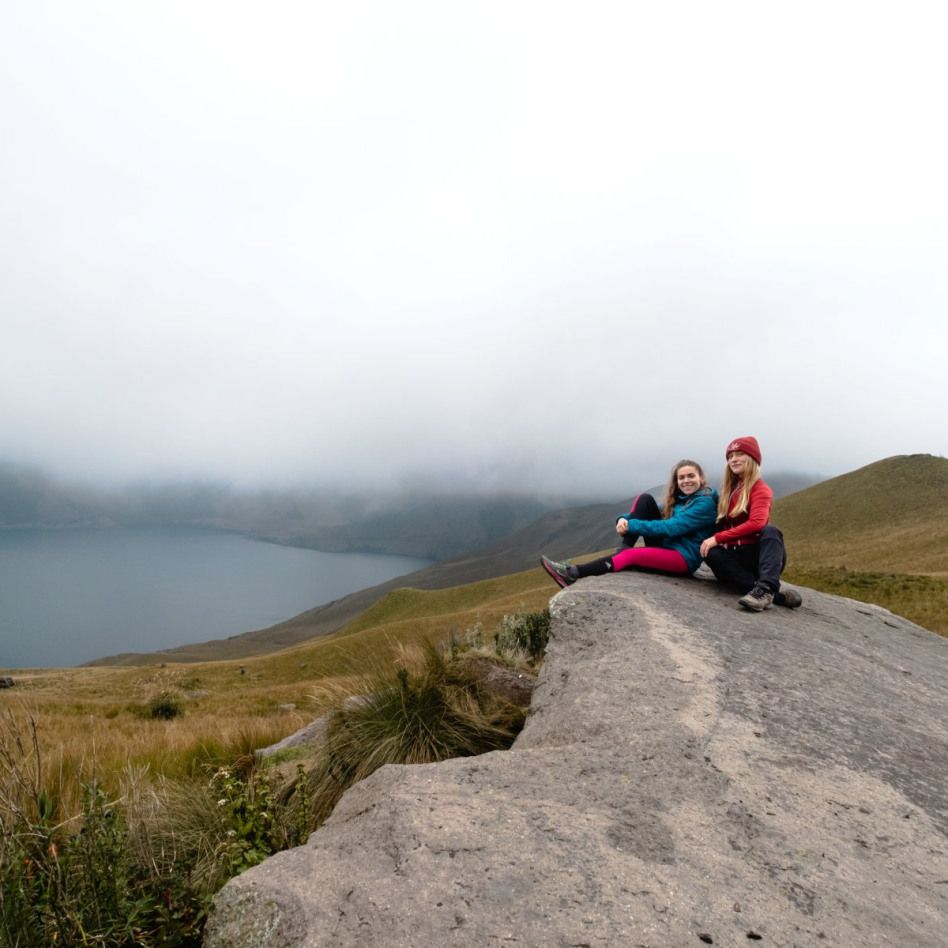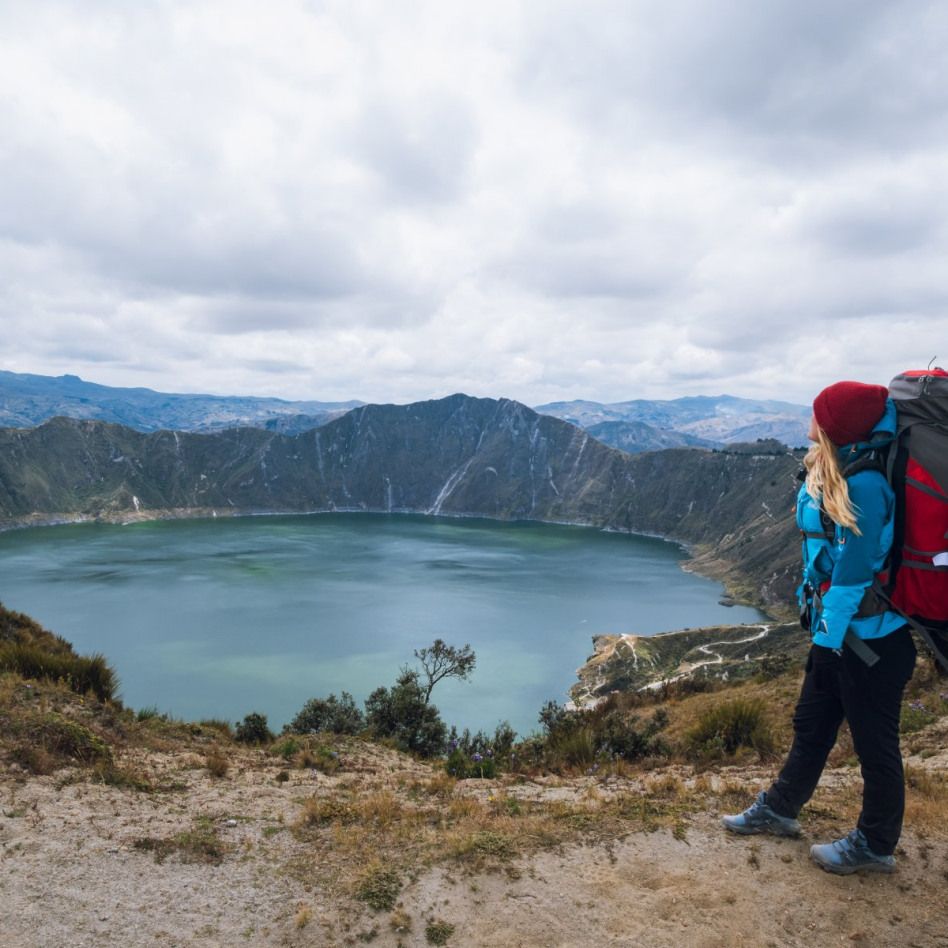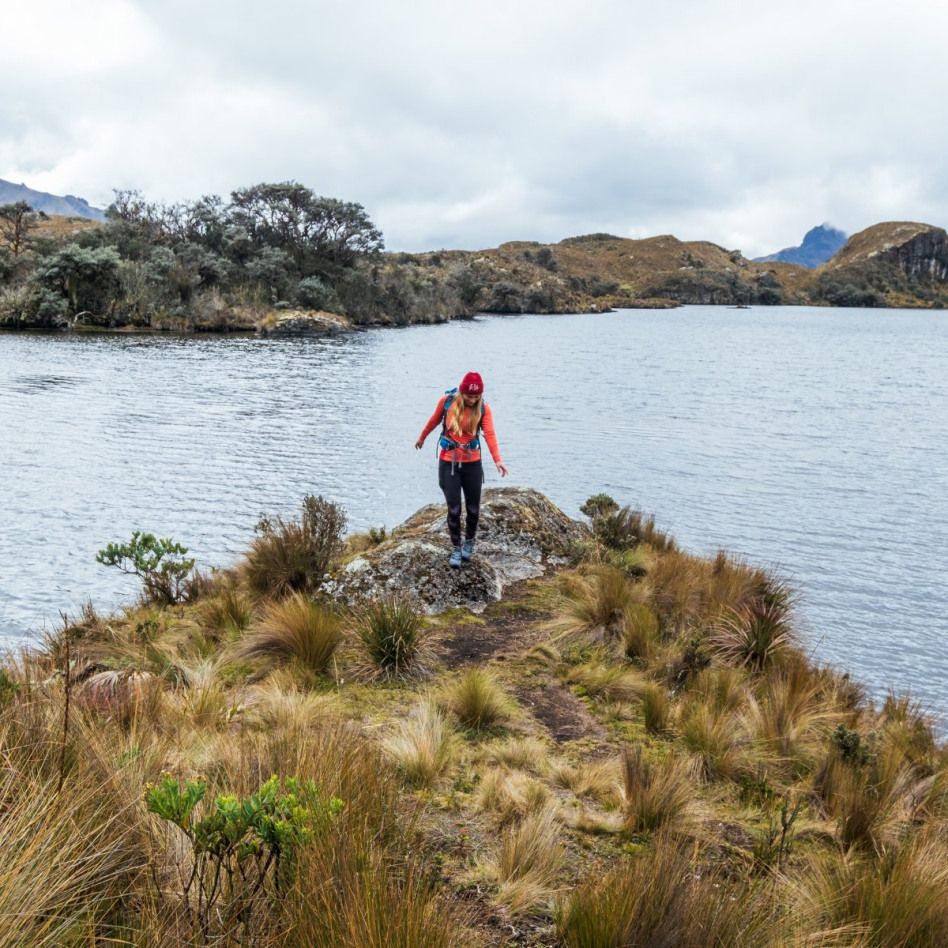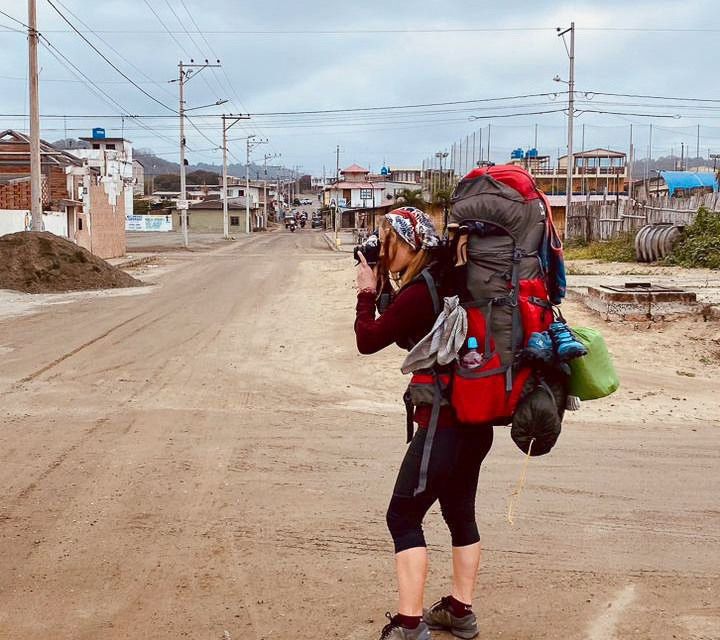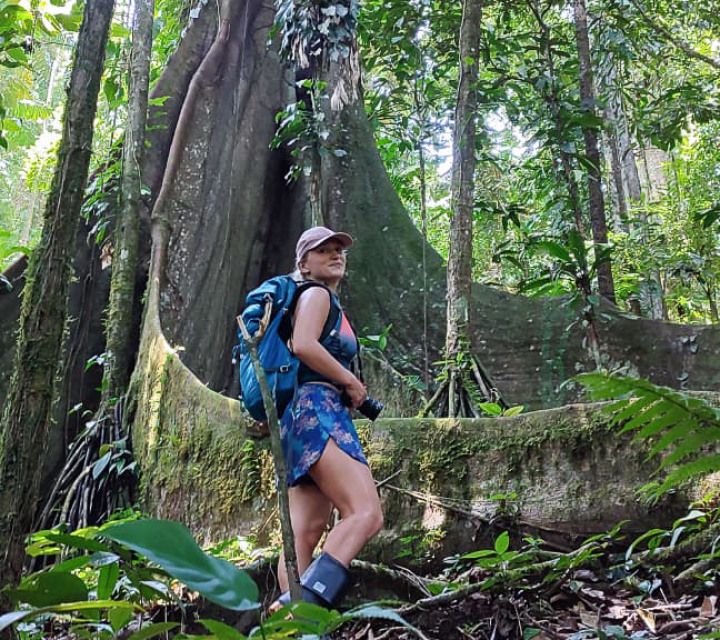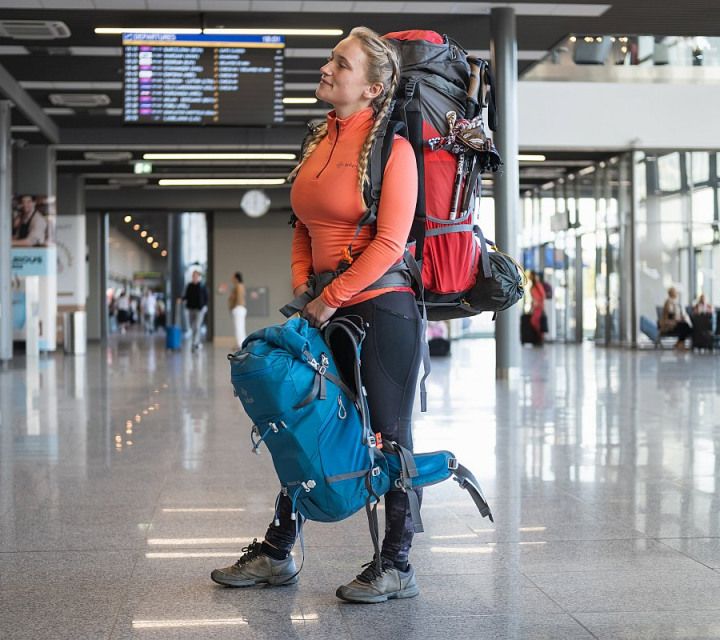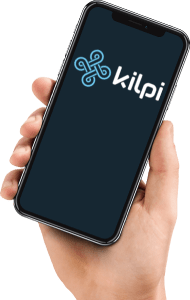Otavalo
Otavalo, located north of Quito, is noted for having the largest market in Ecuador. The market's location, La Plaza de Ponchos, reveals what is most commonly sold here. When the market is at its busiest on Saturdays, the main square and surrounding streets become a maze of colourful fabrics and beautiful patterned clothing.
Laguna Cuicocha
In addition, there are many lagoons and mountains around Otavalo ideal for day trekking. The most famous is the Cuicocha lagoon, which shouldn't be so hard and thus ideal for people who aren't so used to the altitude. I met two Canadians at the hostel, then a girl from Brazil on the bus and a lady from the Netherlands on the trek itself. So now we have a trekking team. But we don't talk much while walking, we barely manage to breathe. We have all been in Ecuador for only a few days and even though the lagoon is just over 3,000 meters above sea level it is giving us a lot of trouble.
While we are gasping for breath a group of Ecuadorians with numbers on their shirts run past us. We learn that there are often races running around the lagoon. Oh great, so we're barely breathing and they're running around without any problems.
Fuya fuya
The very next day, I planned a trek around Lagunas de Mojanda with my new roommate Marta and hiked up Mount Fuya Fuya. Compared to Cuicocha Lagoon, this trek is less well known. There is no bus going that way and taxis can't go there either due to the poorly maintained road. We got there thanks to the owner of the hostel by a small truck.
I have a pretty love-hate relationship with treks in Ecuador so far. The altitude di erence really gives you a hard time especially during the rst few days of acclimatization. Every twenty steps there is a two-minute breathing break. My lungs seem to hate me now.
Fuya Fuya is translated by the locals as clouds of clouds. No wonder, both the top of the mountain and the surrounding lakes are covered in clouds most of the time. So when you nally get to the top you're not likely to see much.
The weather around Otavalo changes from hour to hour. For a while it's warm enough to wear just a t-shirt, but twenty minutes later it can get so cold that I'm looking for a jacket and gloves in my backpack. The BELVELA-W mountain trousers have been my favorite, because I've never been cold or hot in them thanks to the light and airy material. At the same time they are elastic enough not to hinder movement in the mountains. For windy or cooler weather I wore the WILLIE-W long-sleeved functional shirt, which thanks to the opti-dry material wicks away sweat perfectly, so I felt comfortable during the more demanding sections. On sunny days, the cap was ideal, and during colder weather I wore the TONIA-W winter hat.
3-day trek around the Quilotoa lagoon to Sigchos
The trek around Quilotoa lagoon is probably one of the best and most popular multi-day trekking routes in Ecuador. The hiking trails along the entire route wind through the Ecuadorian Andes and connect a number of rural farming villages.
Most hikers start in the town of Sigchos and make their way through the mountain villages to the Quilotoa Lagoon. I, along with my new trekking buddy Andre, decided to go the other way around and so we arranged to meet at the lagoon.
I arrived at the lagoon a day early and thanks to the IOVERLANDER app, I found a cool spot to pitch my tent right overlooking the lagoon. But as soon as I see the beautiful sky full of stars, I immediately hide the tent and sleep under the open sky! I changed into thermal underwear and put on a hat. It's not cold outside and it's not that windy, so sleeping without a tent shouldn't be a problem. In the morning I wake up in a nice warm sleeping bag, but both the sleeping bag and the mattress are covered in frost. As soon as I nally scramble out of the sleeping bag, I nd that it's incredibly cold outside and it's blowing terribly. The plan was to take a coolphoto like I just woke up on a cli with a great view. Since my ngers are turning blue from the cold, I throw the idea away pretty quickly, quickly take a picture of at least the mattress and sleeping bag, and look for gloves and jacket in my pack.
While waiting for Andre I hide in a local cafe. Around the lagoon there is a small village full of hostels, restaurants and souvenir shops. In one of the hostels I leave a small backpack with things I won't need.
In my 70 liter Biggy backpack, I pack for 3 days: a mattress, sleeping bag, tent, trekking poles, cookware, cooker, water lter, food for 2 days (you can buy more it in local villages along the way) and a big water bottle. I take mainly warm clothes: thermal underwear, LIGANO-W leggings, BELVELA-W trousers, LISMAIN-W T-shirt, WILLIE-W long-sleeved T-shirt, PAPILON-W outdoor jacket, MAMBA-W waterproof jacket and last but not least gloves, hat, scarf, underwear and socks.
We leave around 10 am. Almost every ten minutes we take a break for breathing (we are at 4000 m above sea level after all) but mainly for photos! Beautiful views are everywhere and the weather is beautiful. From the lagoon the trek continues through mountain villages full of children constantly asking if we can give them chocolate or money.
In the afternoon we reach the town of Chugchilán where most people stay overnight in a hostel. The whole trek is easily manageable without camping gear thanks to the hostels located all along the route. We, however, trek outside the town to a lookout point so we can have a view of the surrounding mountains during dinner and watch the sunset from our tent. It's just a shame that once we got to the viewpoint, it started to rain and within moments there was fog all around us.
On the second day, we tramped through the rocky gorge to the valley. At the river we pull out water lters, re ll our water supply and I change from winter clothes to just a t-shirt. It's much warmer in the valley and instead of gloves and a hat I'm looking for sunscreen in my backpack.
We camp overnight by the river. On the last day we have just a few last kilometers (most of them uphill, unfortunately) to the town of Sigchos, where we celebrate the end of the trek with ice cream. We then take the bus back to the lagoon where we camped for the last night.
Latacunga and the Mama Negra festival
Latacunga is well known among travelers as the perfect town to visit Cotopaxi National Park. I'll be in town for almost two weeks because I'll be at a local institute helping students with English conversation.
On arrival, I nd I am very lucky as the Mama Negra festival, a traditional celebration in honor of the Virgin de la Merced, who supposedly stopped the eruption of the Cotopaxi volcano in 1742, is taking place. There is a huge promenade in the streets, with traditional music playing everywhere and people dancing in traditional costumes.
Cotopaxi
I head to Cotopaxi National Park for the day. The main reason for the visit for everyone is the Cotopaxi stratovolcano. As I expect snow and wind, I wear a functional WILLIE-W shirt, ACTIS-W jacket and NUUK-W outdoor trousers. The pants are comfortable and warm thanks to the softshell material. The only problem is that I'm quite small and so I have to fold the trousers twice at the ankles each time, but that doesn't limit my movement or comfort in the end.
Without a high altitude guide, it is possible to go up to 5000m above sea level, which I plan to do with a couple of other travelers I have joined. As we reach the last mountain hut, we order coca tea, which helps to better cope with the altitude. In the wooden room used as a restroom, I suddenly see a giant Czech ag on the wall, signed by everyone who has made it to the hut. Which means I'm signing there too.
Chimborazo
The highest mountain in Ecuador whose peak is closest to the sun due to its location close to the equator. My dream from the very beginning of planning my Ecuador trip was to climb to the top of Chimborazo. However, the expedition group I was to go with as a photographer changed the date of the climb to a date when I already had to be in Peru due to my internship. But at least I have a reason to return to Ecuador. Although not to the summit, I'm still going to climb Mount Chimborazo. Without a guide, it is possible to climb up to 5,100m. It is not an easy hike, and I see many exhausted people sitting around me along the route either gasping for breath or with headaches. Acclimatization should de nitely not be underestimated here.
Cajas National Park
On my last day in Ecuador, I head to Cajas National Park, located near the city of Cuenca. There are several circuits of varying di culty and length. For families with children or beginners, there are short and easy circuits and for more experienced hikers there are treks of several hours to two days over the tops of the mountains.
Throughout the area there are thought to be 786 lakes, lagoons and ponds connected by crystal clear streams. Waterproof boots are therefore de nitely the basis of appropriate clothing, as most of the national park is soaked in water. It also rains quite often, so it's always worth bringing a waterproof jacket.
From the national park I return to the city of Cuenca, from which I take an overnight bus to Peru!

 277 279 914
(Mo–Fr: 9:00–15:00)
277 279 914
(Mo–Fr: 9:00–15:00)


